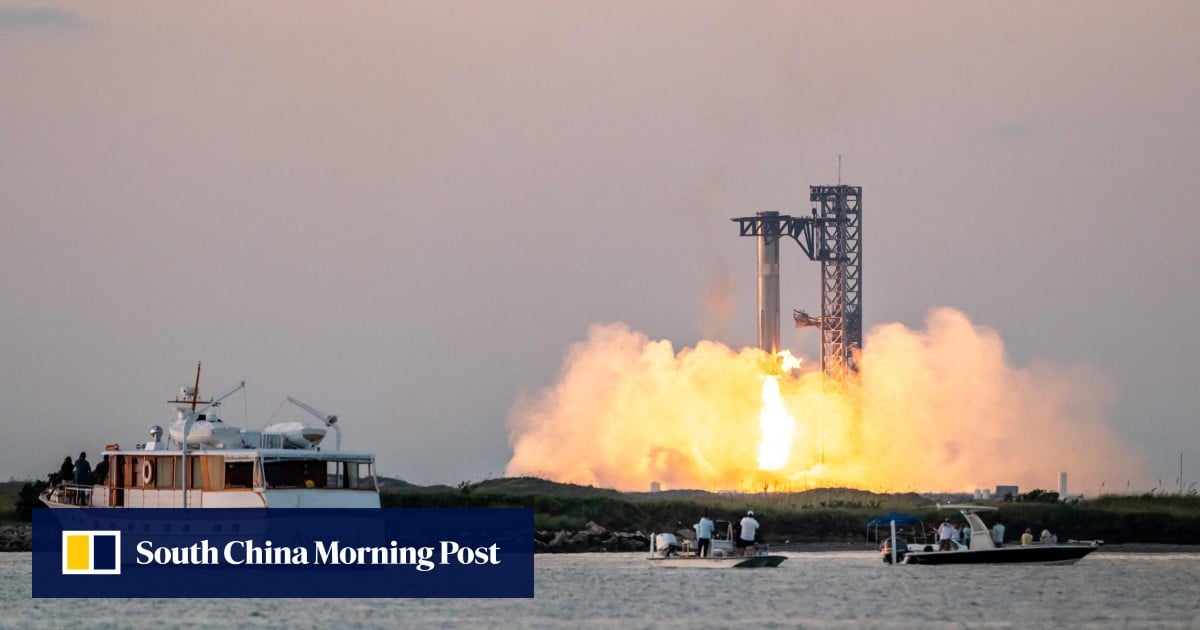SpaceX in its fifth Starship test flight on Sunday returned the rocket’s towering first stage booster back to its Texas launch pad for the first time using giant mechanical arms, achieving another novel engineering feat in the company’s push to build a reusable moon and Mars vehicle.
The rocket’s first stage “Super Heavy” booster lifted off at 7:25am CT (12:25 GMT) from SpaceX’s Boca Chica, Texas launch facilities, sending the Starship second stage rocket toward space before separating at an altitude of roughly 70km (40 miles) to begin its return to land – the most daring part of the test flight.
The Super Heavy booster re-lit three of its 33 Raptor engines to slow its speedy descent back to SpaceX’s launch site, as it targeted the launch pad and tower it had blasted off from. The tower, taller than the Statue of Liberty at over 400 feet, is fitted with two large metal arms at the top.
With its engines roaring, the 233 foot (71 metres)-tall Super Heavy booster fell into the launch tower’s enclosing arms, hooking itself in place by tiny, protruding bars under the four forward grid fins it had used to steer itself through the air.
“The tower has caught the rocket!!” CEO Elon Musk wrote on X after the catch attempt. SpaceX engineers watching the company’s live stream roared in applause.

The novel catch-landing method marked the latest advance in SpaceX’s test-to-failure development campaign for a fully reusable rocket designed to loft more cargo into orbit, ferry humans to the moon for Nasa and eventually reach Mars – the ultimate destination envisioned by Musk.

